What's Happening Here?
Here’s a timely challenge for you. I recently visited a grower who showed me these plants:
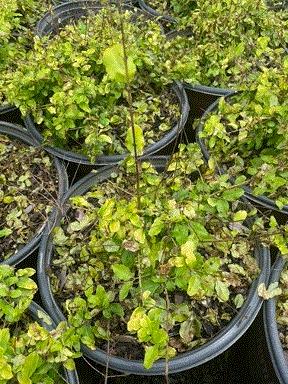
The symptoms were observed on a woody ornamental, Ligustrum sinense Sunshine and literally appeared overnight. Wow! Pretty fast development, not to mention the severity of the symptoms.
This was the only variety to express these symptoms. Could it be caused by insects, diseases ... or perhaps an alien attack? That’s for me to know and for you to find out, at least for now. Let me ask, "What’s happening here?" and see if you can figure it out by the end of the newsletter. Don’t scroll ahead for the answer—take your time and enjoy the newsletter.
Fall Gaillardias
Gaillardia are some of my favorite perennials to market in the fall. Here are a couple of cultivars from PlantHaven I saw at the summer trials that are great candidates for spring, summer and fall programs:
|
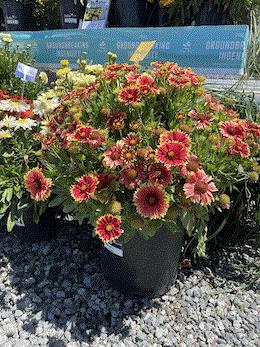 Sunset Cutie Sunset Cutie
|
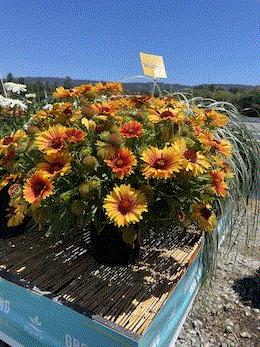 Sunset Orange Sunset Orange
|
Sunset Cutie is a proud member of the Realflor Compact collection and features red-bronze flowers with cream borders and has an attractive compact 14 in. x14 in. mounded habit. Sunset Orange from the Realflor Sunset Medium collection has great flower power and features two rows of flat amber/orange flower petals. It grows 16-in. tall and across. Both of these cultivars are hardy to Zone 5.
I know it’s too late to add these to this year’s program, but consider looking at them when you select next year’s fall program. Like I mentioned above, gaillardia are great for spring and summer sales, too.
Fine-Tuning the Growing Process

GrowerTalks is hosting a great FREE webinar on Thursday, September 23, 2021 titled, "The Best Strategies for Fine-Tuning the Growing Process." Two environmental specialists—Jacob Souza, Field Application Technician, and Vinay Sharma, Project Design Lead for Argus Controls—will explore how to identify the most problematic variables in your growing environment and the best practices to ensure a high level of efficiency. Jacob and Vinay will also explore how production processes can be fine-tuned through automation to reduce costs and make your operation more sustainable.
Click HERE to learn more about this FREE educational opportunity sponsored by Argus Controls.
Ornamental Grasses Day
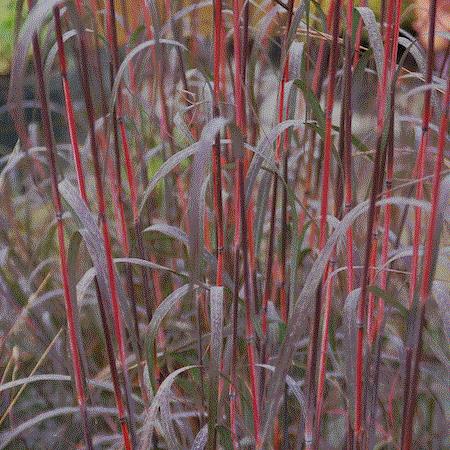
Andropogon Holy Smoke bred by Intrinsic Perennials.
Intrinsic Perennials is hosting the 7th Annual Ornamental Grasses Day on Friday, September 17, 2021. The day will be filled with networking, education, food and perennials. That sounds perfect, doesn’t it? Three speakers—including Roy Diblik, Northwind Perennial Farm; Elliott Duemler, Taylor Creek Restoration Nursery; and Brent Horvath, Intrinsic Perennial Gardens—will be presenting great information on ornamental grasses. The cost is $60 per person.
Email sales@intrinsiceperennialgardens.com or call (815) 648-2788 to register.
The Answer is …
At the opening of the newsletter, I shared this image of symptoms on a ligustrum I recently observed and asked if you could determine its cause:
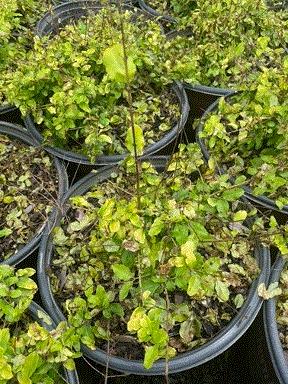
This may look familiar to some of you, but allow me to share a couple more images for this group of plants:
In these images, I wanted to point out two things: the leaf spots in the image on the left and the leaf drop in the image on the right. Do these clues (symptoms) help or hinder your diagnosis? Now that you’ve seen it up close, let’s take an overview of the crop and see if that provides a little more insight.
|
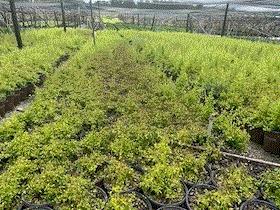
Ligustrum with symptoms.
|
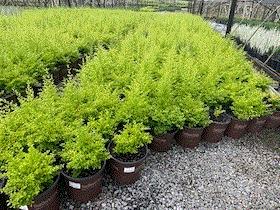
Healthy crop of ligustrum.
|
These pictures were taken at the same grower—the crops are just a few weeks apart. One is showing symptoms and one is not. Alright, I think I’ve given you plenty of clues.
But wait—there’s one more! It’s not caused by insects, bacteria or pathogens. Now, do you know what’s happening here?
I bet my last clue threw a few of you off the diagnostic trail, while it probably solidified the answer for others.
If you answered herbicide injury, you're a diagnostic superhero and deserve to take the rest of the day off (please check with your employer before doing so).

Lessons Learned
You didn’t think I was going to leave the challenge like that, did you? Instead, I’d like to explain how the injury to the ligustrum occurred and how it could have been prevented. However, I’m not going to disclose the herbicide since there was more to blame than the herbicide itself and this type of damage can occur anytime herbicides are applied improperly. (There. I said it.)
The exact cause of the diagnostic challenge was caused by improper application of a pre-emergence herbicide. There were three aspects of this application I identified that were done wrong. Here they are and how the misapplication could have been avoided:
-
The pre-emergence herbicide was applied to a sensitive crop. Product labels usually provide a listing of plants that have known sensitivities to the herbicide. Paying attention to the labels and avoiding applications to sensitive crops is the first step to using pre-emergence herbicides safely.
-
The application rate was higher than intended. This became evident as the grower applied a different herbicide with a higher application rate with a different herbicide just prior to making this application. No calibration was done between applications and no calibration trays were used.
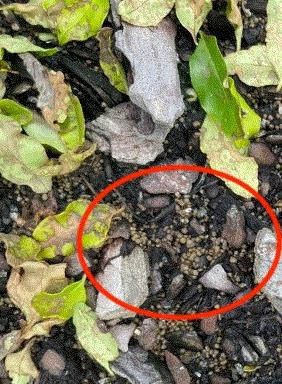
Visual inspection of the soil surface also confirmed an over application, as this is significantly more granules than the labeled application rate would have left behind.
-
The foliage was wet during the application causing the granules to stick to the foliage. When this occurs, the active ingredient can cause injury to the leaves. Granular herbicides should ALWAYS be applied to plants with completely dry foliage.
These three application errors led to the injury to the ligustrum. There’s always a risk when using preemergence herbicides over the top of actively growing plants. However, following a few simple rules can greatly alleviate or prevent potential injury from occurring altogether. When applied properly, pre-emergence herbicides can be used safely and will significantly reduce the costs of hand weeding.




Thanks for reading this edition of Perennial Pulse. My email is ppilon@ballpublishing.com if you have any comments or suggestions.
Take care,
Paul Pilon
Editor-at-Large—Perennial Pulse
Technical Manager—OHP, Inc.
This email was received by you and 34,121 other fine subscribers!
If you're interested in advertising in Perennial Pulse, contact Kim Brown ASAP and she'll hook you up.